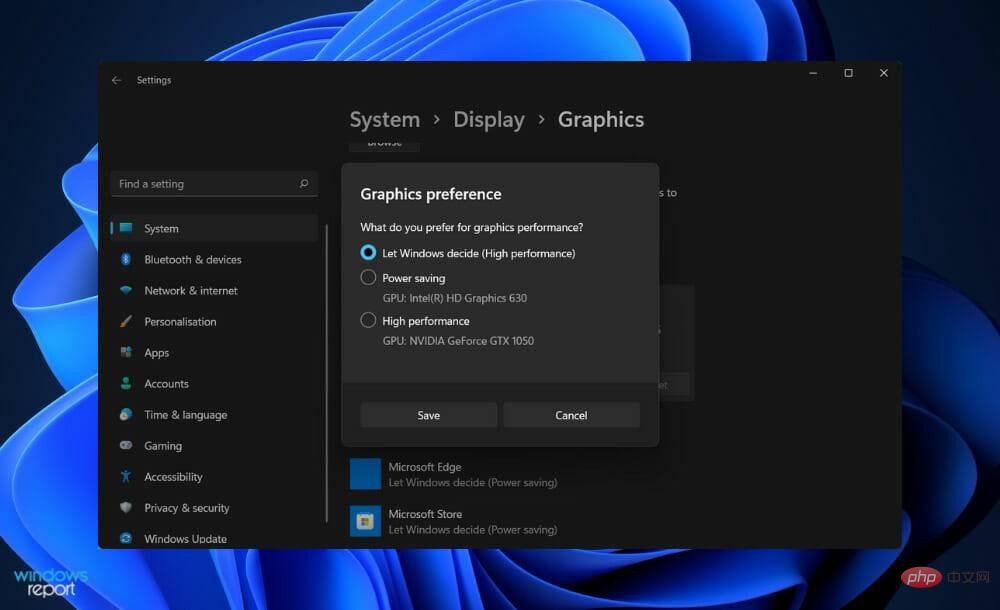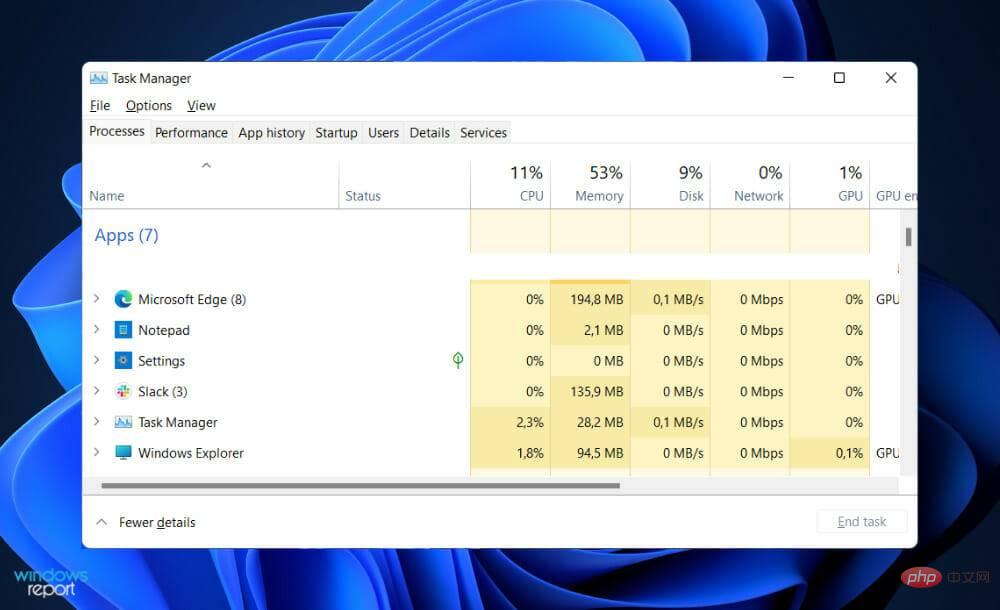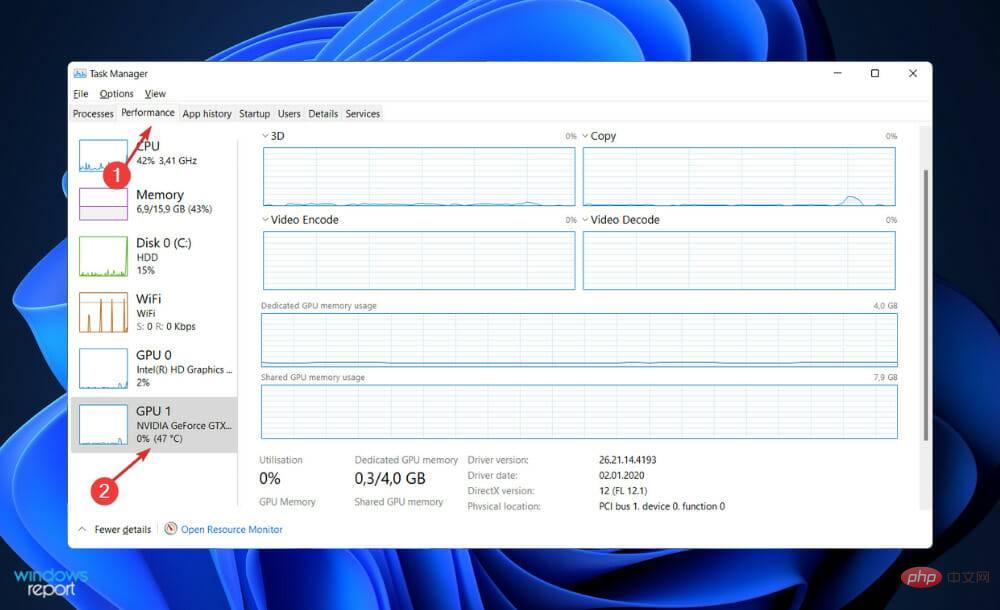Home >Common Problem >How to check your GPU temperature in Windows 11
How to check your GPU temperature in Windows 11
- 王林forward
- 2023-05-03 09:40:061737browse
When you play games or run resource-intensive applications (such as a virtual machine or video editor) on your computer, you may feel something, or more likely, hear something. You may notice that the fan on your computer is spinning wildly, and this is perfectly normal.
This is just the way a PC responds to temperature fluctuations. Fans help control the airflow through the computer, which helps prevent the graphics card and processor from overheating, which helps prevent performance throttling.
When you play games or watch videos, the temperature of your GPU increases. There is nothing to worry about as this is exactly what the system is intended to do. If you notice temperature levels that are higher than those in other games, check your computer's vents and fans.
Reducing in-game graphics settings can also help control thermal conditions and may even result in a slight increase in frame rate. Continue learning how to check your GPU's temperature and monitor it more closely, but first let's look at what the perfect temperature should be.
What is the optimal temperature for GPU?
We sometimes overlook the importance of keeping core hardware running at optimal temperatures from time to time. It has the potential to help your system in a variety of ways, from improving performance to extending its lifespan.
That being said, keeping your gear cool isn't always easy - especially when you add in scenarios like gaming and elevated ambient temperatures.
As most people know, gaming puts a lot of extra stress on your computer's components, especially the CPU and graphics card. Most of the time, this pressure is converted directly into heat.

#When you play games, your hardware must run faster to maintain the performance levels your game requires. As a result, your components will naturally get hotter.
It makes no difference whether you have an AMD or Intel processor. The temperature thresholds for each processor are significantly different. Today, the recommended CPU temperature for gaming purposes is 176°F (80°C), with an average temperature of 167°-176°F (75°-80°C).
On the other hand, the CPU may get hotter under certain circumstances. Long gaming sessions as well as overclocking can result in slightly higher average temperatures.
The normal temperature range for a GPU is between 65 and 85 degrees Celsius (149 and 185 degrees Fahrenheit). If its temperature exceeds the maximum, for example if it is around 100°C, you can try to reduce the sustainable heat level based on the current temperature.
However, this only works if you know the current GPU temperature. Overheating the card can cause serious hardware damage, so it is recommended to pay attention to the temperature when using it.
How to check the temperature of your GPU in Windows 11?
Use Task Manager
- Simultaneously press the CTRL ALT DELETE button on the keyboard, and then click Click Task Manager to open it.

- Now, navigate to the Performance tab and scroll down until you see the GPU panel on the left. Below it you will be able to see its current temperature and if you click on it more details will be shown to the right.

For a complete description of your system information, including the temperatures of your CPU and GPU, we recommend that you use specialized tools such as Aida64's products.
What type of air cooling should I use?
When it comes to gaming, it's almost always preferable to buy an aftermarket GPU with an open-air cooling architecture. In addition to ensuring cooler temperatures throughout the board, this will physically increase the performance and longevity of your gear.
Not to mention they have a more attractive aesthetic appearance. If your case doesn't have optimal airflow, we still prefer this design over a blower-style fan design because it's quieter.
On the other hand, a GPU with a new cooling architecture is a more expensive way to achieve the same goal. In addition to providing cooler temperatures, open air cooling will provide a calmer overall experience.
Alternatively, if you want to perform a lot of CPU-intensive tasks (which generate too much heat), you can always use a fan GPU to push some of the excess heat out of the back of your PC. With this type of cooling, you will notice a slight decrease in internal temperature.
Blower style fans may also be better suited for smaller sized PC builds. They are much smaller than open-air systems and won't suffocate your other equipment. All contemporary graphics cards come equipped with smart fans.
These fans usually turn off until the temperature reaches 86°F to 104°F (30°C to 40°C) or higher. This is the point at which they will start running at a predetermined speed (found in the preset profile). This can have a significant impact on noise output and power consumption as the system cools down.
The above is the detailed content of How to check your GPU temperature in Windows 11. For more information, please follow other related articles on the PHP Chinese website!
Related articles
See more- How to disable search highlighting in Windows 11?
- Can you get a job through Qianfeng training?
- Obscura 3 camera app gets overhauled interface and new shooting modes
- Studio Buds, the 'best-selling” Beats product yet, now available in three new colors
- Microsoft apps on Windows 11 22H2 encounter issues after restoring the system



